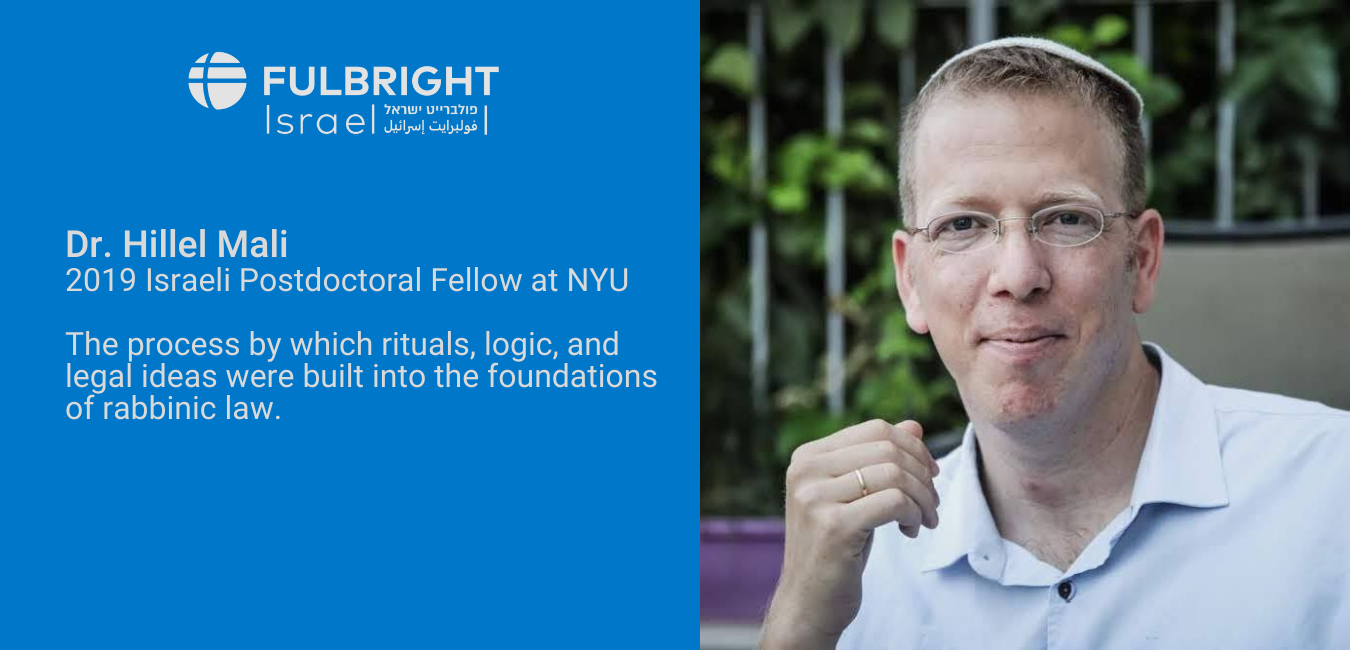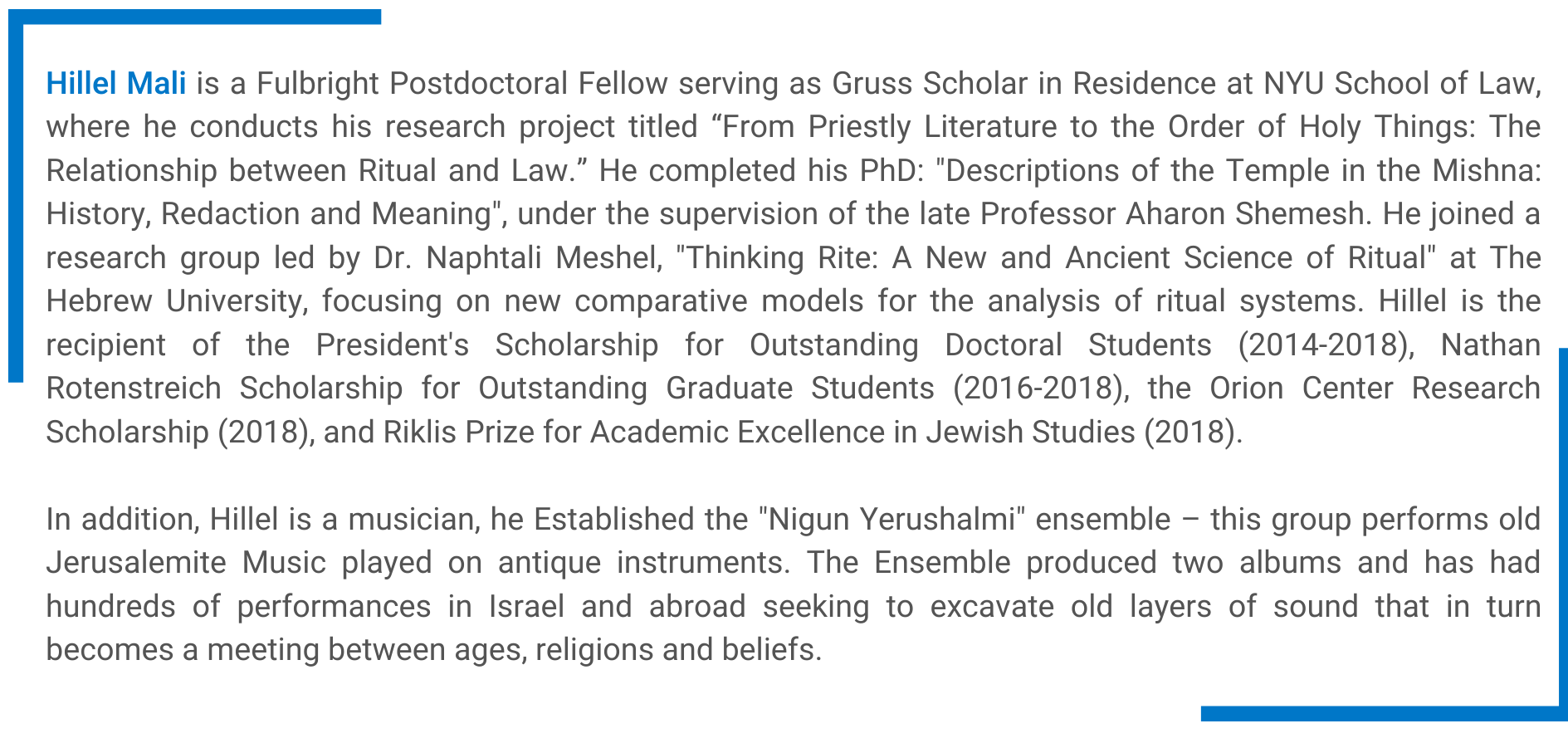
Law and ritual have a complex relationship, and thinking about its beginnings in biblical religion offers an opportunity to understand some of the basic legal structures of Western civilization. It also highlights central parts of the story that undergirds the rabbinic normative system, which exists until today.
God’s self, in the Hebrew Bible, is twofold: There is a God of law (mishpat), about whom Deuteronomy says that His ways are mishpat (Deut 32:4). This is an intelligible God, whose laws are good and wise. Thus, humans can offer reason-based critiques of God’s justice. Abraham, upon learning that God would destroy both righteous and wicked people in Sodom, accused God that “the judge of all the earth shall not do justice (mishpat)” (Genesis 18:25). There is, however, another God. This God, says Isaiah (6:3), is “holy,” unapproachable, unintelligible, and terrifying unto death (Numbers 16). Approaching the holy requires a complex protocol of sacrifice, purification, and sacred architecture, which we can collectively call “cult.”
Cult and law seem to be separate: The commanding and adjudicating God makes the distinction between good and bad, whereas the holy God is the source of the distinction between sacred and profane. Wise people understand the former and priests serve the latter. However, in ancient Israel, the priestly tribe held both functions: They were simultaneously temple attendants, teachers and judges. The Torah describes the temple precinct as housing both sacrifices and several ritual components of the justice “system” as it were: Questions regarding practice and judgement came to the Temple of Deuteronomy (17:8-12). Numbers 6 requires a woman suspected of adultery to undergo an ordeal at the temple. A source embedded in the book of Leviticus (which scholars call the Holiness Legislation) weaves both strands together. It makes ethical perfection the pinnacle of holiness, and as Bible scholar Israel Knohl noted, it also makes holiness the telos, the high purpose, of the law. “Be holy, for I your God am holy,” commands Leviticus 19, before rattling off instructions on honoring parents, abstaining from idols, proper treatment of sacrifices and gifts to the poor.
The danger of mixing law with cult is that the former can be crushed in the death grip of the latter. Ritual makes morality and norms fuzzier. This is not only for the obvious reason that an oligarchy, and a theocratic one at that (a term invented by Josephus to describe the Jewish priesthood), would by nature accrue power which will ultimately corrupt it. It is also because ritual brings people closer to God, from whom they have become estranged through their sins, i.e. their moral failings. If ritual can atone for sin, then coming to the Holy allows worshippers to believe that ritual scrupulousness can make up for their failings. So long as the sacrifice is correctly executed, the oblations properly adhered to, the priests correctly attired — all crimes can be corrected.
Jeremiah famously said that holding this belief makes the temple a “den of thieves” (7:11). This is not a metaphor: If the wealth brought to the temple is ill-gained; if coming to the temple is a way to cleanse the guilt of thievery and murder, then the temple itself is where dirty money is hidden. An actual den for actual thieves.
This is not just a ritualized form of self-delusion or autosuggestion. It is built into the biblical legal universe as well. The temple itself is an asylum from prosecution: The word asylum itself, derived from the Greek for “inviolable,” is a cultic term. Criminals can hide from the law in the shadow of the holy.
Biblicist Jacob Milgrom plotted out places in which the Hebrew Bible pushed back against this tradition. Exodus (21:14) rules that a murderer must be taken to die “even from My altar.” Solomon, builder of the temple, is also associated with ripping supplicants away from the temple and meting out justice to them. Specifically, Joab seizes the horns of the altar — believing this will ensure his safety. Solomon sends executioners to put him to death, in the sacred precinct. (The whole story is found in 1 Kings: 2).
This trend grows stronger in rabbinic literature. In the Palestinian Talmud, brought to its current form before the fifth century CE, Joab is described as running to the Sanhedrin, the highest rabbinic court, imagined as sitting in the temple precinct, near the altar:
Rabbi Tanhuma said: He escaped to the Sanhedrin. As it was taught: “The property of criminals executed by the court belongs to their heirs; the property of those executed by the king belongs to the royal treasury”. Joab said: I would rather be executed in court and have my children inherit [my assets] than be killed by the King and have him inherit … (Yerushalmi Makkot 31d).
Rabbinic law requires that the assets of criminals executed in the courts go to their heirs, but that the assets of people executed by the kingdom be seized by it. The Talmud explains Joab understood that his rebellion against the king could cost him not just his life but also his assets, and so he ran to the court. He did not seek asylum from the law by taking refuge in a holy place, but rather sought refuge from an unbridled and lawless “kingdom” with the fair judges who sit by the altar. An earlier rabbinic work, the Mishnah (Middot, 4:8) describes the Sanhedrin as arbiters and judges of the priesthood.
We might assume that this is the end of the story. That for the rabbis, law overcame cult completely, and that wise men (as the rabbis called themselves) control the cult and rule over it. However, this process cuts both ways. Not only was rabbinic ritual governed by legal logic, but rabbinic law also became highly ritualized. As rabbis lorded their law over priests, they became more priest-like. While the destruction of the temple and the disestablishment of its cult may have made Jews more conscious of the other aspects of their heritage, such as the Torah and its study, it also allowed the language of the temple, and its continued existence as a metaphorical structure, to permeate the norms governing the rest of the world. The breaking of the temple walls made the whole world, for the rabbis, slightly more temple-like. Thus it is no longer just that ethical perfection can lead to holiness, or that holiness could be read as the justification for ethical perfection. Ritual logic and ritual ideas have seeped into the foundations of the structure of rabbinic law, even as it is practiced today.

Articles are written by Fulbright grantees and do not reflect the opinions of the Fulbright Commission, the grantees’ host institutions, or the U.S. Department of State.


